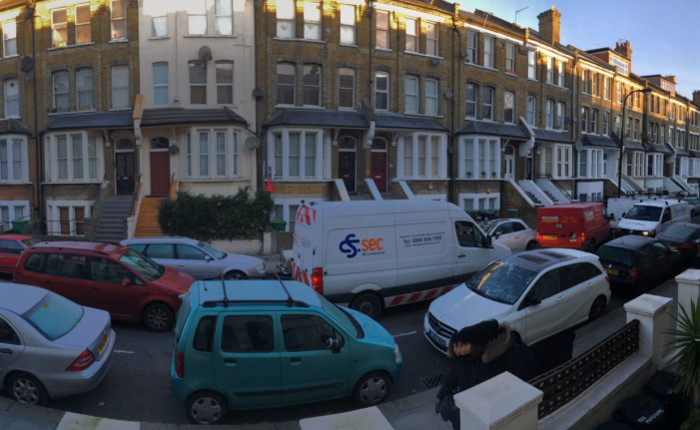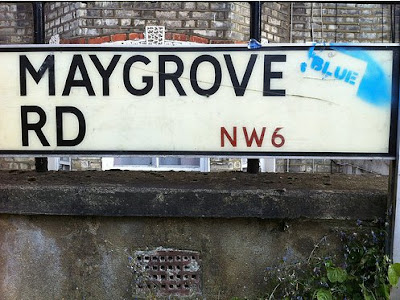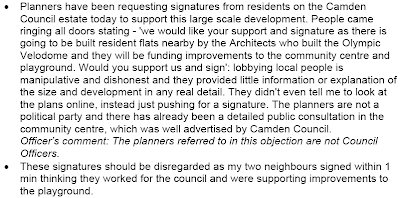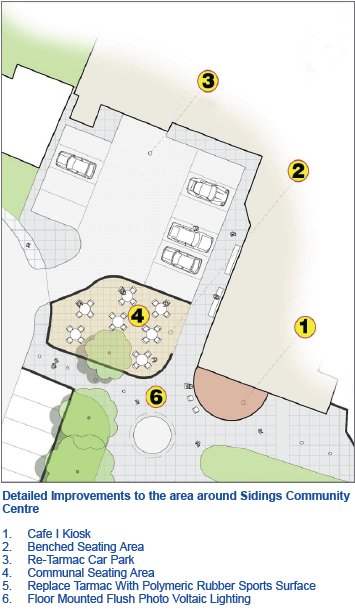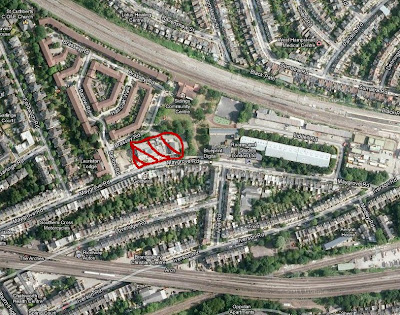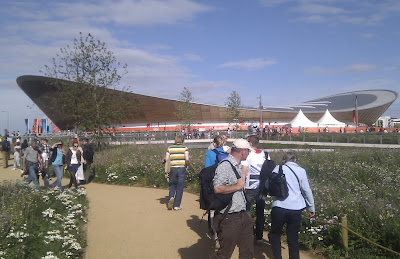Last Thursday, Camden’s Development Control committee granted conditional planning permission for the development of 91 flats on 65-67 Maygrove Road.
It was a rather complicated debate. The issue was not one of architecture, nor about replacing offices with housing. Rather, it was about the low share of affordable housing and whether this should be reassessed earlier than would be normal.
 |
| CGI image: Looking west along Maygrove Road |
The debate was a little hard to follow for those of us not overly familiar with the nuances of planning regulation and, at one stage, the boss of developer Regal Homes was so desperate to win councillors over that he pretty much got out his wallet and promised a large lump sum payment right then and there.
Lets start at the beginning. The idea of developing this site is relatively uncontroversial. Although Camden is rightly keen to keep employment space, the owner of Handrail House – the main existing building on the site – has struggled to find tenants for some time, and the housing need is acute as we all know. The full planning report is here.
Very wisely, given the enormous impact the new development will have on the Sidings estate, Regal Homes has been working hard to offer Sidings some incentives so that residents will support the development. During the consultation phase this strategy was met with scepticism by some.
It is unusual for Section 106 money (the contribution developers make to the local area to mitigate the impact of new residents) to be allocated to specific projects up front. This is partly because over the lifetime of a building project, priorities and projects can change. However, Cllr Risso-Gill pushed for it to be recorded in the minutes that some of the money should be ring-fenced for renovation of Sidings Community Centre, sports facilities and amenities in the Peace Park, and the overgrown area on Maygrove Road. Although this will not be written into the final formal agreement, it does seem likely that money will be spent on these areas.
 |
| CGI image: View from Brassey Road |
The more challenging issue, and one that vexed several councillors, was that of affordable housing provision. Camden’s benchmark is that 50% of the floorspace of any new development should be dedicated to affordable housing. In practice this is rarely achieved and developers set out to prove that the development would not be viable at all if they conformed to this requirement as their profits would be too low. They can then be forced to make a financial contribution to fund affordable housing elsewhere in the borough.
This development proposes just 18% of floorspace for affordable housing – which translates to 12 flats out of the 91. In such cases the onus is on the developer to prove that this is the maximum viable number of units. The planning authority (Camden council) hires an independent assessor to look over these numbers. Here’s where it gets complicated. Large-scale developments take time to build. In a rising property market such as this one, the value at the time of sale could far exceed that at the time of assessment, which could of course mean that more affordable units would be viable.
In a rising market this should suit everyone. According to Camden’s independent assessors, a “modest 5% increase in sales values would improve viability by c£1.5 million.” In other words – more affordable housing could be built. In such circumstances, it’s become normal for councils to seek a “deferred affordable housing contribution” based on a re-appraisal of the scheme’s viability. However, when that reassessment takes place clearly matters. Three years is apparently standard, but can be brought forward – useful in a volatile market.
This is where the developer started to get twitchy. It felt that he saw the chances of permission being granted slipping away as councillors pushed hard on this issue. He explained that banks simply wouldn’t lend him the money if there was a lack of certainty over the return and more or less said that if the project was rejected or deferred today then it simply wouldn’t go ahead as he’d be unable to secure development finance.
In reality, it’s more likely that he could have appealed the rejection on the grounds that Camden officers had approved the plan, and had he won on appeal (I’m told this is quite likely) then other Section 106 money could have been lost as a result.
As councillors continued to push, Camden’s legal adviser explained that officers could go away and work on the wording of any permission to reflect the desire for a reappraisal closer to the completion point of the project than is usual. If the reappraisal of value determined that more affordable housing would be viable given the market value at the time, then Camden would be able to claim the money from the developer up to a capped amount based on a formula.
This is where Mr Eden, who left school at 16 and worked on market stalls before launching out into the property market, seemed to revert back to his trading roots. Clearly anxious about the direction the discussion was taking, he volunteered to add an extra £500,000 to his Section 106 money if the permission was granted tonight (see 1h58’30” in video)
Unsurprisingly, that’s not quite how development control meetings work – at least not in Camden. Frances Wheat, head of development control, explained that there was a statutory formula for calculating any deferred contribution, although this itself was capped. According to the planning documents, this could be as much as £7.7million for this development.
Finally, the vote was taken on whether to grant permission. This would be on the condition that the revisions to the timeframe for reassessing the viability of affordable housing met with councillors approval. This could happen as early as this week – if they are not approved, the whole application will come before the committee again. Eight councillors voted in favour, none against, and Cllr Risso-Gill abstained as she “was not comfortable with the application overall.” The full webcast of the meeting is below.
Of course none of this offers any guarantee that the build will take place. For all the permissions granted of late, it’s only the student block on Blackburn Road that’s making progress. Ballymore – developers of the 187-199 West End Lane strip of land – is proving difficult to pin down by anyone, even though those shops are going to shut over the next few weeks. Nor are there any signs of construction starting at the 163 Iverson Road site, where the architects told me in November that the project was on hold.







